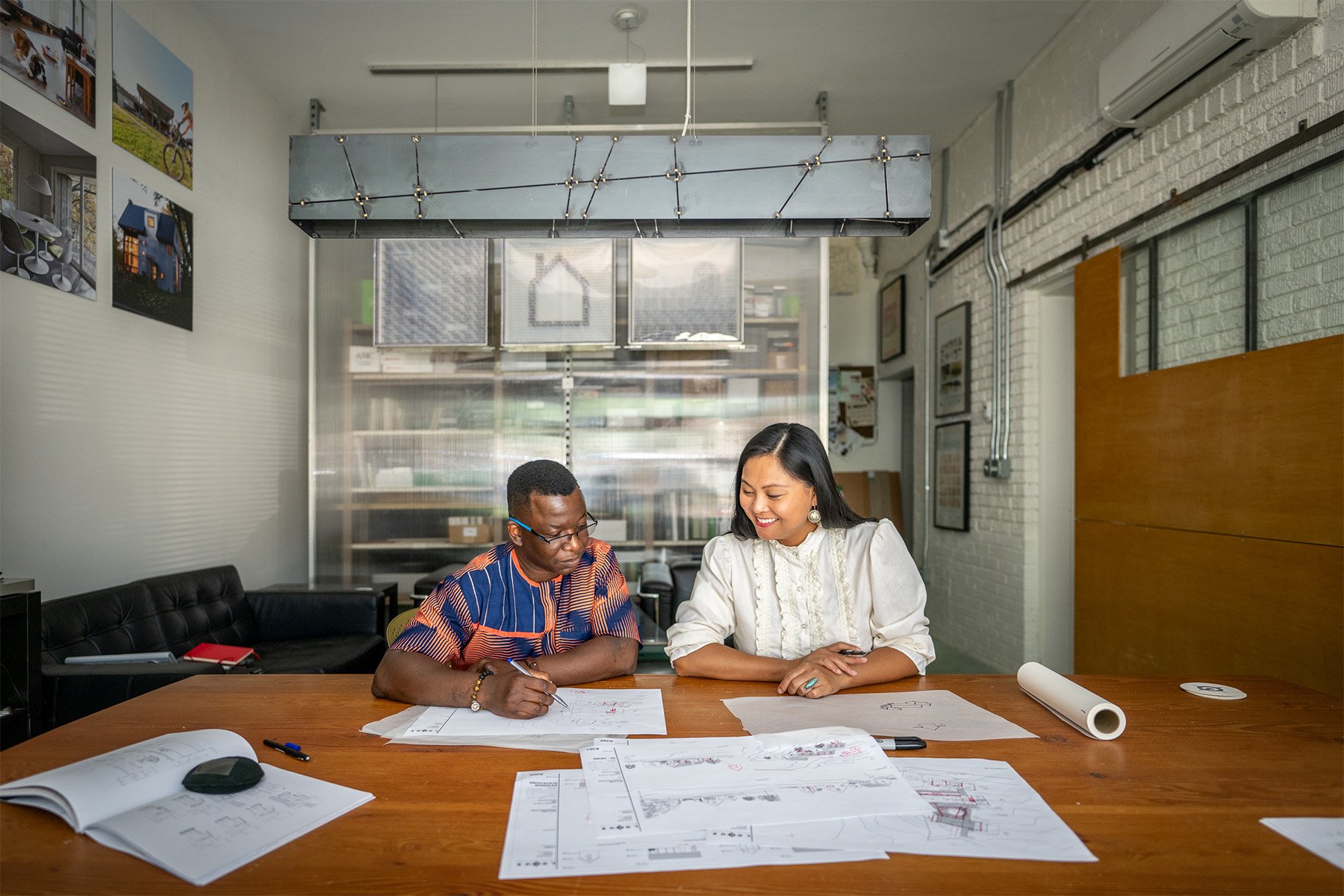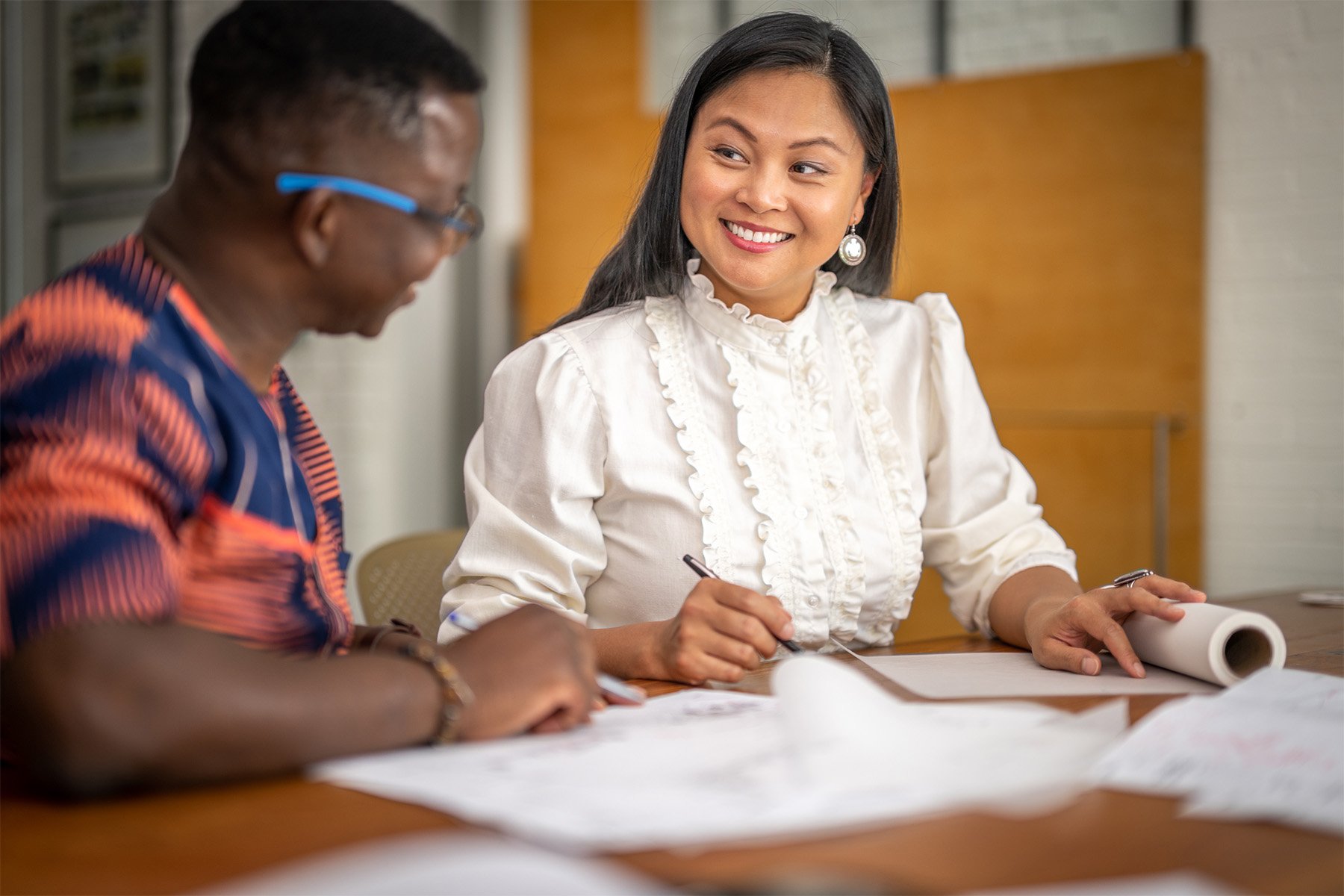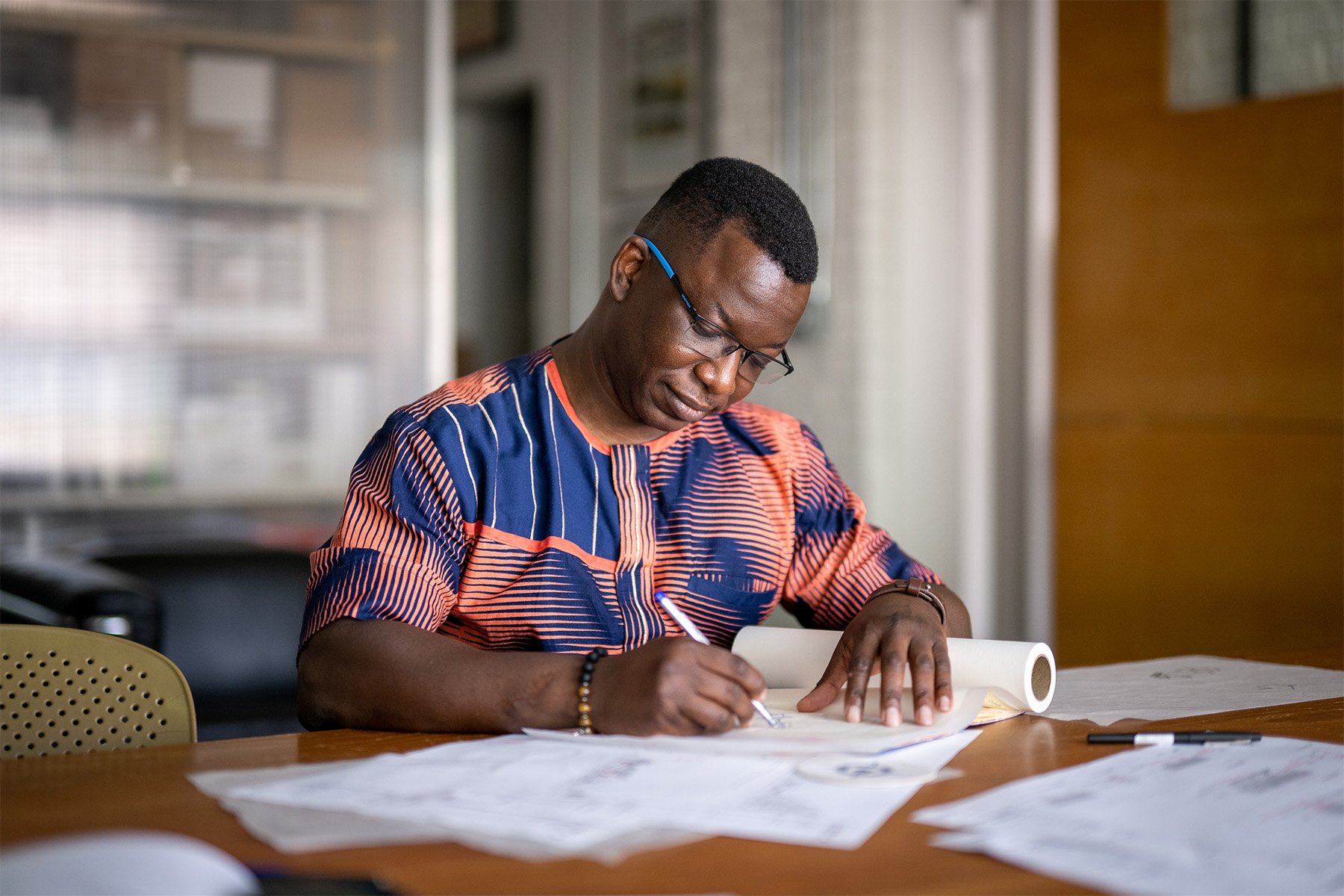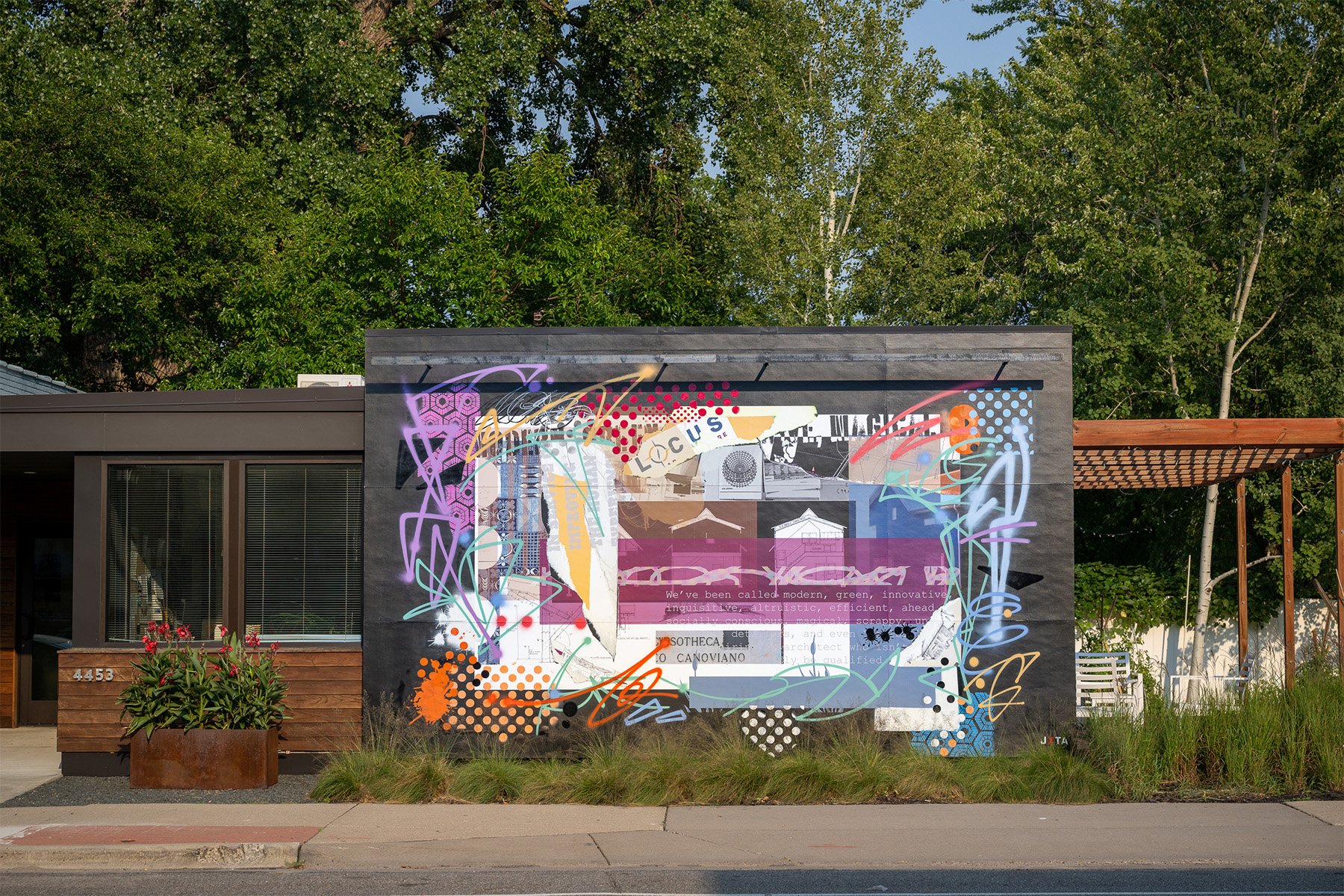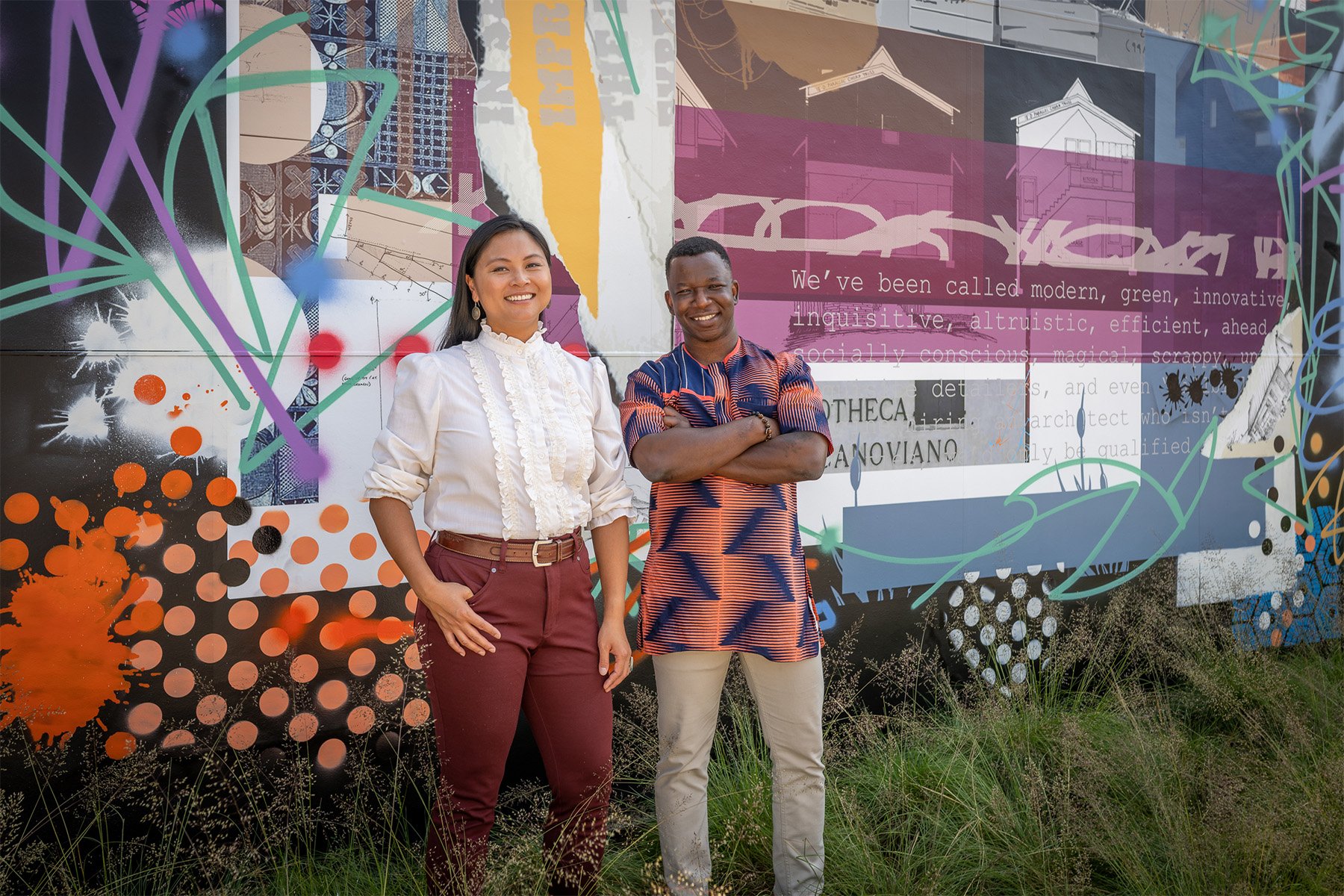New Chapter, New Street Mural for Locus Architecture
The Minneapolis firm marks an ownership transition with a new artwork by Juxtaposition Arts
Interview by Chris Hudson | October 6, 2022
The new Locus Architecture mural by Juxtaposition Arts. With its artwork, landscaping, and deck, the Locus studio is an especially inviting commercial building on Nicollet Avenue in Minneapolis’s Kingfield neighborhood. Photo by Chad Holder.
FEATURE
Locus Architecture had an eventful summer. In June, the firm invited clients, collaborators, and friends to the Annex in South Minneapolis to celebrate its 28th anniversary and announce an ownership transition. In late August, the new owners, Constance Chen, AIA, and Wale Falade, AIA, hosted another gathering, at the firm’s Kingfield neighborhood studio, to unveil a new mural by Juxtaposition Arts (JXTA). The street-facing art wall layers sketches, construction drawings, aerosol graffiti, and words into a collage that captures Locus Architecture’s creative energy and values.
Commissioned by Locus with the aid of a grant from the Southwest Business Association, the JXTA mural is a notable addition to the fabric of the Nicollet Avenue corridor. ENTER recently visited with Chen and Falade to learn more about the making of the mural and the ideas embedded in it.
Photos 1–4: New owners Wale Falade, AIA, and Constance Chen, AIA, in the Locus Architecture conference room and in front of the mural. Photo 5: Juxtaposition Arts incorporated the firm’s new brand colors—developed by Black Fish Gold Studios—in the mural. Photos by Chad Holder.
First, congratulations on becoming owners. Have you two known each other for a while?
Chen: Thank you! And no, Wale and I met on what was basically a blind business date last year. [Locus Architecture firm founders] Paul [Neseth] and Wynne [Yelland] introduced us. We hadn’t previously crossed paths because my background is purely residential and Wale has a commercial background, and many of his past projects were out of state. But I will say, when I met Wale, I instantly felt like I had known him for a very long time.
Falade: I felt the same way. Prior to meeting Constance, I had always thought that, if I were to partner with someone on something like this, it would be a classmate from architecture school. But with Constance, I immediately felt at ease.
Now that you’ve been working together, have you found that you complement each other in any interesting ways?
Falade: Constance is a doer. She attacks problems faster than I do, for sure.
Chen: And Wale is an amazing strategist. His brain is always going a million miles a minute. Overall, though, we have a very strong shared vision. It’s all about people for us.
Falade: We want employees to feel good, like they belong. And we want clients to feel good working with us. That’s why we included the words “in service of improving the human experience” in the mural.
How did the new mural come together?
Chen: Wynne and Paul—they’re both still with the firm, each as a principal emeritus—had always had a vision for a mural that evolved organically, adding layers and a patina over time, and they got a grant for it. When Wale and I came on board, they told us to run with it, and we began looking at several ideas and artists.
“In architecture, there’s been a certain way we’ve looked at beauty for quite a while, and I’ve been training myself to look at beauty differently, from other cultural points of view. You see some of this expressed in the mural.”
Falade: I had relationships at JXTA, and we really liked a mural that JXTA had done for one of our clients, so we reached out to them.
Chen: We worked with JXTA’s Roger Cummings and Kristen Murray and [JXTA] alumni Alex Smith and Alex Vaquerano. They came up with a solution that fit our budget—a digitally created mural printed on a vinyl base, with aerosol elements applied by the artists after installation. It was fun being the client instead of the designer.
Falade: Yeah, they interviewed us. We talked about our values as a firm, our backgrounds, what inspires us.
Chen: We created a Pinterest board with Locus sketches and diagrams, some studies and section details we’ve done. Personal sketches, too. My father is originally from Taiwan, and my mother was a refugee from the Vietnam War. I had done a sketch of my father’s hometown, and I told the JXTA team that I was hoping it could be included in the mural.
Falade: Cultural background is such an important part of how we talk about beauty, right? Beauty is a very personal thing, and it’s highly cultural. In architecture, there’s been a certain way we’ve looked at beauty for quite a while, and I’ve been training myself to look at beauty differently, from other cultural points of view. You see some of this expressed in the mural—things that are important, like Constance’s drawing. The African textile print is a way of showing how pattern comes into art and architecture. And then JXTA added their own layer of interpretation with the aerosols.
At the end of the day, beauty is a kind of spiritual connection. That’s what it is for us. We want to continue to look beyond the ways we’ve been traditionally trained to look at beauty.


